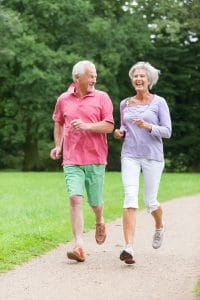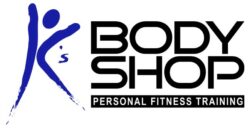Strength Training for Distance Running

Running, jogging and walking are all relatively inexpensive and effective activities for maintaining or improving health, cardiovascular fitness, and weight management. These activities can be done virtually anywhere, at any time, alone or with a group, indoors or outdoors. Programs are available for all abilities, from beginners to recreational joggers to experienced racers.
Common Muscle Imbalances
Although every individual is different, there are common muscle imbalances seen in regular runners. Muscles that are usually tight and need to be stretched include: hamstrings, gastroc and soleus of the calf, quadriceps, hip flexors, pectorals and anterior shoulder girdle. Muscles that are commonly weak and need to be strengthened include: gluteals, hip abductors, VMO, tibialis anterior, tibialis posterior, trunk stabilizers and abdominals, posterior shoulder girdle and scapular stabilizers. Postural or biomechanical factors such as hip drop or leg length discrepancy, leg alignment, foot structure and mechanics can also contribute to muscle imbalances and compensatory mechanisms. Imbalances may need to be addressed not only to improve running performance, but to prevent injury. The most common weaknesses occur in muscles that are underutilized during running; particularly muscles in the upper body that support posture, and frontal plane muscles of the hips which help stabilize the pelvis during gait. Many of these imbalances are caused or exacerbated by too much sitting.
Training Components
Components of a properly designed running program include flexibility, strength training, proprioception, balance and agility, and cardiovascular fitness. Start slow and increase running volume and intensity gradually. In general, it is recommended that running frequency, intensity, or time/distance not exceed 10% per week to minimize overuse injuries. Since runners only have one foot in contact with the ground during the gait cycle, single leg stability is critical. Heel strikers dissipate ground reaction forces differently than midfoot or forefoot strikers, and therefore experience different stresses in the kinetic chain.
Common Running Injuries
Most running injuries are due to overuse: running too frequently, too far, improper terrain (too hard a surface, too many hills, canted roadside) or improper footwear. Of course, muscle and biomechanical imbalances can also contribute to pain and discomfort. For example, the gluteal muscles and hip abductors are commonly weak and can cause the entire leg to overpronate (knee, ankle, foot). This can be a contributing factor to many of the common overuse injuries seen in runners. Common injuries include anterior knee pain, patellar tendonitis, shin splints, plantar fasciitis, stress fractures, achilles tendonitis, IT band tendonitis, low back pain, and various strains and sprains.
Getting Started
Before beginning any new exercise program, check with your Physician to see if running is an appropriate activity for you. If you are currently running less than 10 miles per week or less than 3 days per week, feel free to download our free 8 week build up program to get started. You will need a PDF reader, which you can get from Adobe for free. This program will prepare you for a 5K or 10K training program.
Training Program Options
Option 1.The most effective option is to work one on one with a Professional Coach (also certified as a Level 1 Track and Field Coach) to ensure that you are doing the most efficient exercises correctly. You will first have an assessment to determine your current cardiovascular fitness, flexibility, and muscle strengths and weaknesses prior to beginning a training program. K’s Body Shop will then utilize that information to design a customized program that determines appropriate exercises and intensities so that you can maximize your running performance and minimize the chance for injury. Since there are no contracts, you can work with your trainer as often or as little as you please. Contact K’s Body Shop to schedule your appointment or get more information.
Option 2. If you have a group of runners in the Twin Cities area who are interested in having a Professional Coach oversee your small group running or strength training workouts, contact K’s Body Shop. This is a great opportunity for training partners to contain costs while still getting some professional instruction. Prices vary depending on number of participants and location of sessions.
Option 3. If you are comfortable with technology and relatively healthy, Online Coaching can be a cost-effective alternative to face to face training. Check out our free trial to see how the software works!
Contact the Coach if you need help deciding which option is most appropriate for you.
